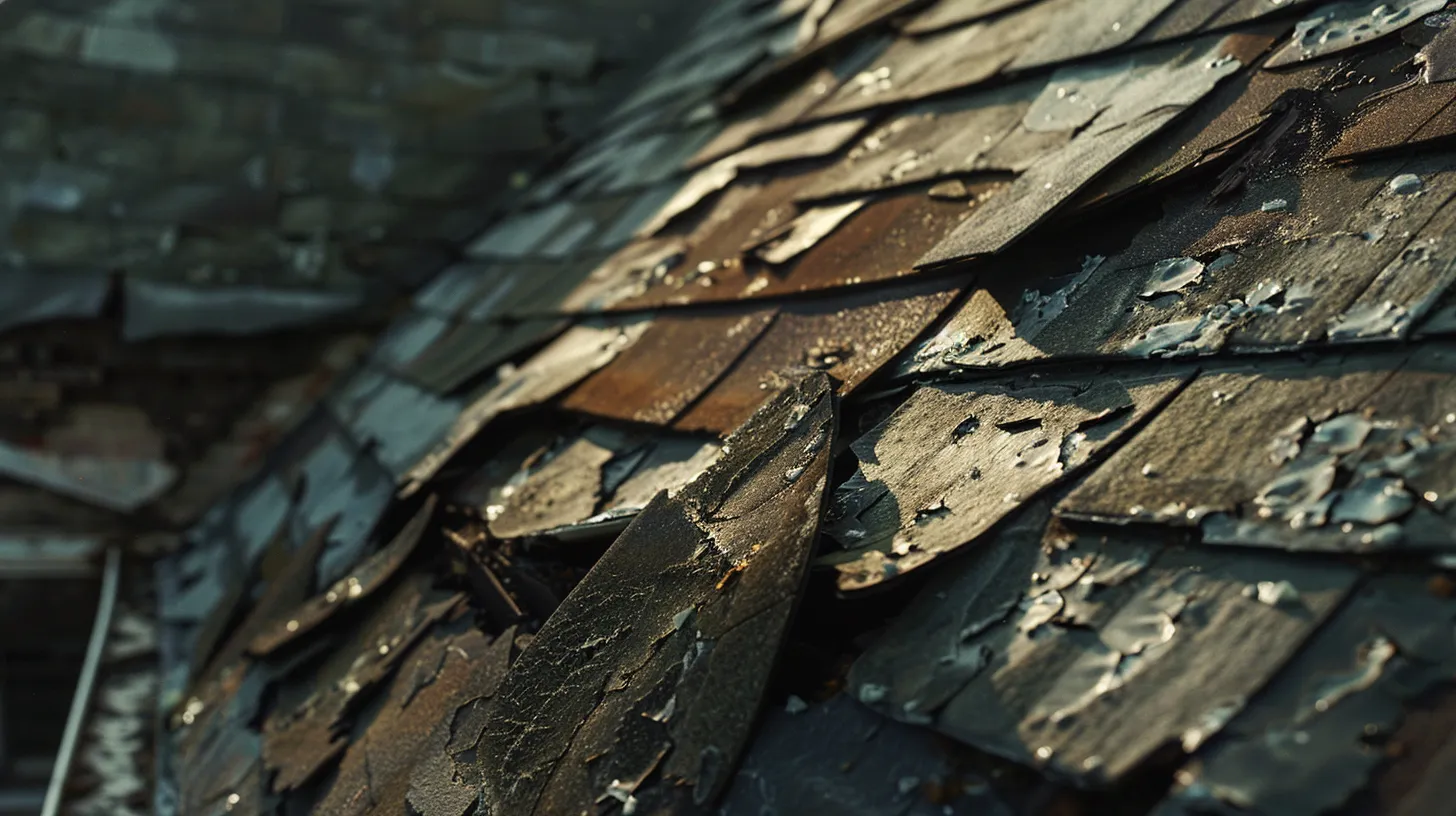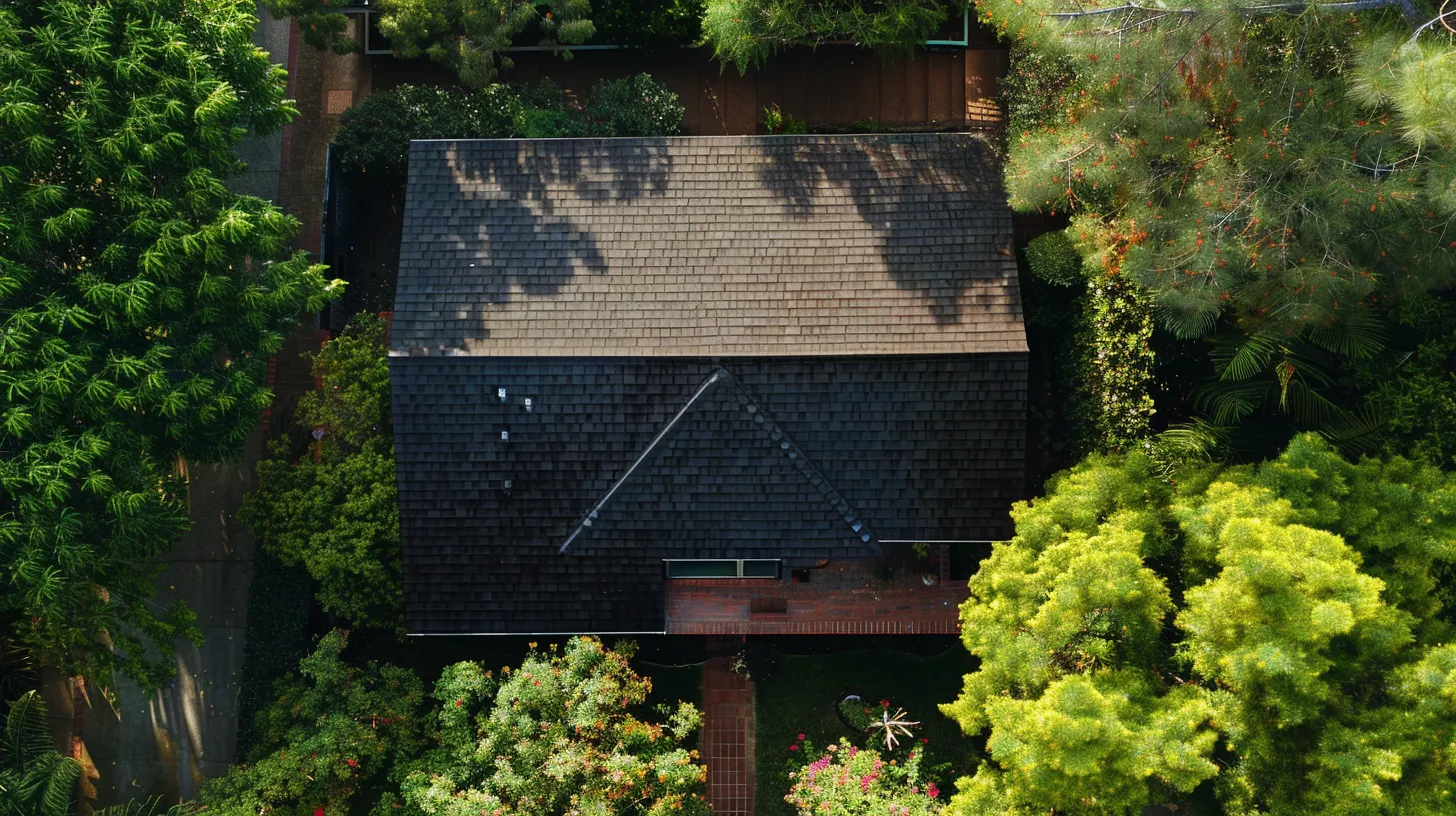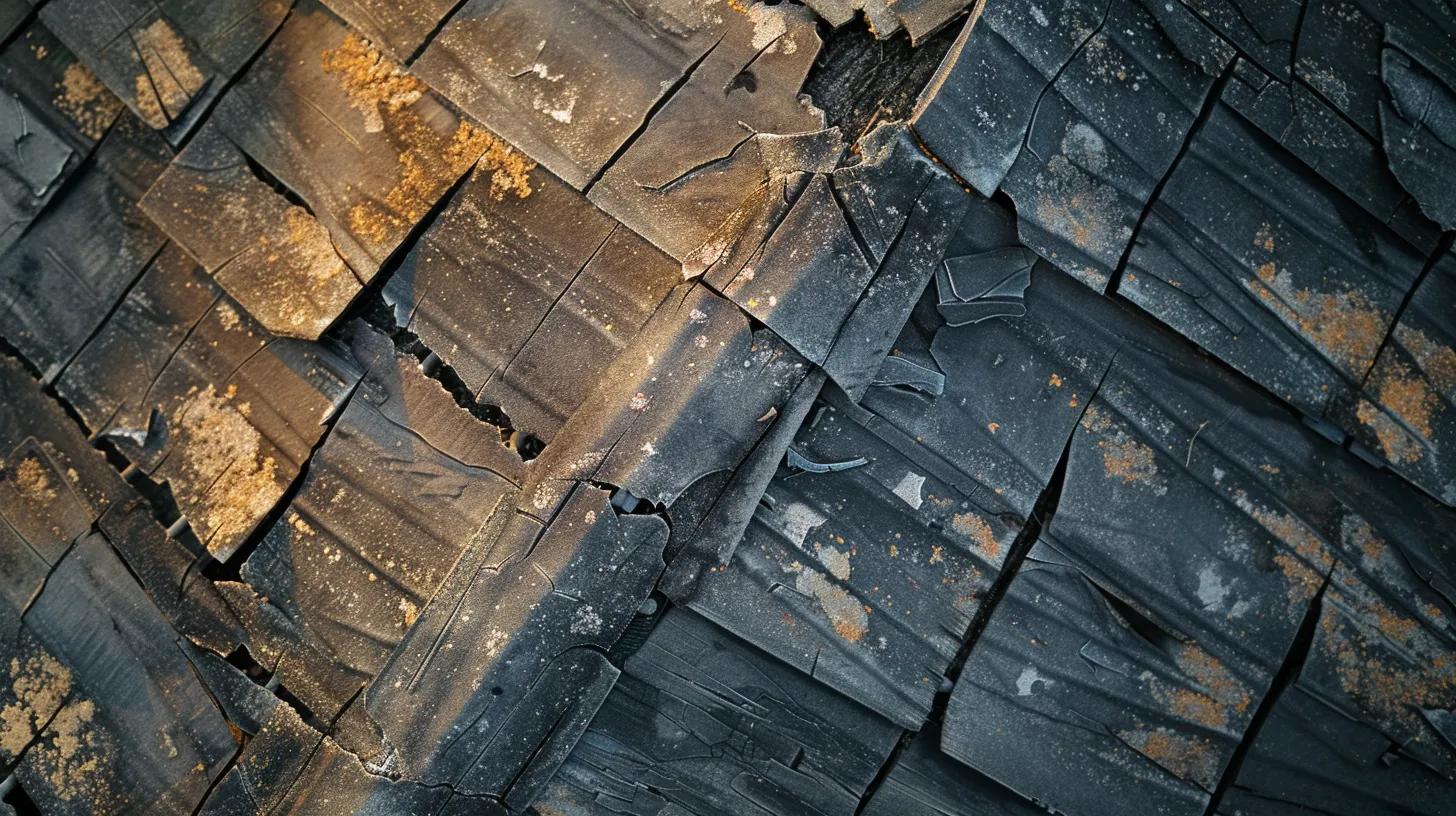
Key Warning Signs Your Roof May Need Attention
Is your roof showing signs of wear and tear? Many homeowners overlook crucial indicators that their roof may need repair or replacement. In this article, we’ll highlight key warning signs, such as damaged roof shingles and water stains on ceilings, that signal potential leaks or structural issues. By recognizing these problems early, you can avoid costly repairs and extend the life of your roof. Whether you’re dealing with high energy bills or noticing algae growth, understanding these signs can guide you in enlisting a qualified roofer for necessary attention.
Key Takeaways
- Regular roof inspections can help identify and address potential issues early
- Look for signs like cracked shingles and water stains to prevent costly repairs
- Maintaining clear gutters is vital for effective roof drainage and preventing leaks
- Address any sagging or structural irregularities promptly to protect your home’s integrity
- Monitoring energy bills can indicate roofing inefficiencies that may require professional evaluation
Key Takeaways
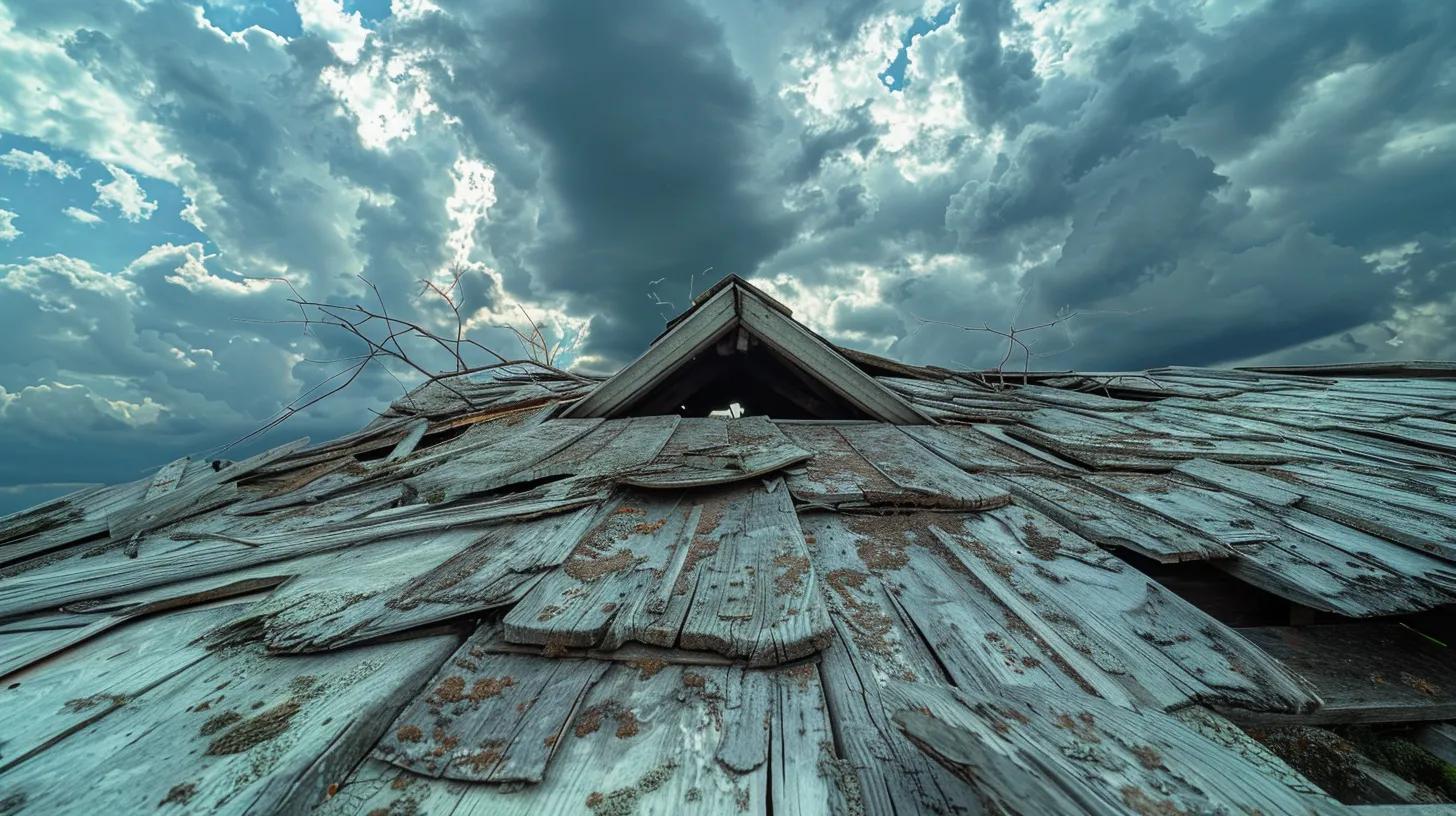
Your roof faces various elements that can lead to significant wear over time. Regular inspections can help identify signs of wear and tear before they become major issues, potentially requiring roof repair and replacement. Look for cracked or missing shingles, which may indicate that your roof needs urgent attention.
Wind can cause damage to your roof’s structure, lifting shingles and compromising its integrity. If you’ve experienced strong winds recently, take a moment to inspect your roof for any loose or displaced materials. Addressing these issues quickly can protect your home from further damage.
Flashing is crucial for keeping your roof watertight, yet it can become damaged or rusted over time. Check the flashing around chimneys, vents, and valleys for any signs of deterioration. Properly maintained flashing prevents leaks that can lead to costly repairs.
Hail storms can leave visible dents in your roof, and this damage can often go unnoticed. After a hail event, inspect your roof for any signs of impact, especially on shingles and metal surfaces. Timely repairs can extend the life of your roof and enhance your home’s overall protection.
A roof can tell a story of wear and time. Look closely, and you will find the signs of neglect that demand attention.
Identify Missing or Damaged Shingles Indicating Roof Neglect
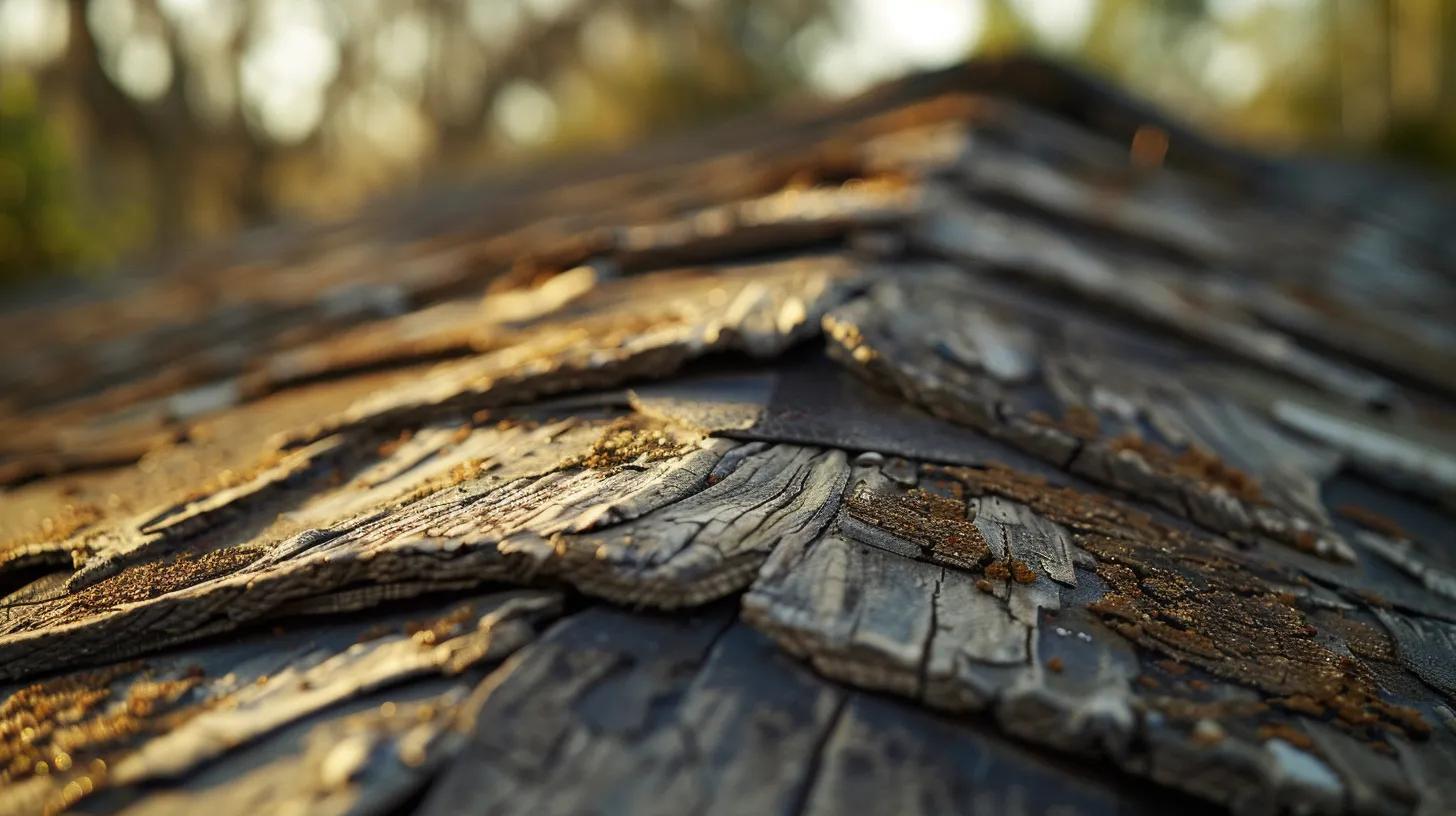
Inspect your roof for noticeable gaps where shingles are missing, as well as any cracked or curled shingles on the surface. Look out for granules accumulating in gutters or near downspouts, which can indicate wear. After a storm, evaluate the presence of lifted shingles and assess any broken ones that might lead to water damage. Count how many shingles need replacement to determine the urgency of repairs, especially when considering home insurance coverage.
Check for Noticeable Gaps Where Shingles Are Missing
When inspecting your roof, look for noticeable gaps where shingles are missing, as this could signal significant neglect. If your roof features asphalt shingles, the absence of even a few can lead to leaks, especially during snowmelt or heavy rain. In metal roofs, gaps may allow water to infiltrate, resulting in damage to your attic or ceiling if not addressed promptly.
Pay attention to surrounding areas as well. Accumulations of granules from shingles in your gutters indicate wear and could mean repairs are necessary. If you notice any missing or damaged shingles, especially in key areas like valleys or eaves, it’s essential to take action to maintain your roof’s integrity and protect your home from future issues.
Inspect for Cracked or Curled Shingles on the Surface
When you inspect your roof, pay close attention to cracked or curled shingles on the surface. These issues can allow water to infiltrate beneath the shingles, potentially leading to mold growth or damage to areas such as your chimney and attic. If you notice these signs, it’s crucial to act quickly to prevent further complications like algae development or creating a dam that traps water on your roof, increasing the risk of leaks.
Checking for these types of damage is essential for maintaining the health of your roof. Curled or cracked shingles can enable moss to thrive, which contributes not only to aesthetic concerns but can also compromise your roof’s structural integrity. By addressing these problems promptly, you can help ensure your roof remains effective over time, protecting your home from the elements and avoiding costly repairs down the line.
Look for Granules Accumulating in Gutters or by Downspouts
As you inspect your roof, be vigilant for granules accumulating in your gutters or near downspouts. These tiny particles often indicate that your shingles are reaching the end of their lifespan, which can affect not just your roof but also your siding and overall home ventilation. Excess debris can compromise your roof’s capacity to shed water effectively, potentially leading to larger issues down the road that may interfere with your warranty.
By promptly addressing granule buildup, you can help ensure the longevity of your roofing system. This small maintenance task allows you to catch early signs of wear and supports proper drainage, ultimately protecting your home from leaks or structural damage. Maintaining clear gutters contributes to the overall health of your home, preventing possible damage to your siding and ensuring efficient ventilation throughout your property.
Evaluate the Presence of Lifted Shingles After Severe Weather
After a severe storm, it’s critical to evaluate your roof for lifted shingles that may have been compromised by wind or hail. These lifted shingles expose your home to potential leaks, especially when rainwater can flow underneath. Conducting regular inspections can save on costly repairs later and keep your residential roofing in top condition while enhancing your home improvement efforts.
If you notice lifted shingles, consider contacting a professional for a free estimate on necessary repairs or replacements. Sunlight can further deteriorate damaged shingles, leading to more extensive issues if not addressed promptly. Taking action on these signs not only protects your roof but also ensures your home remains safe and secure.
Assess Any Broken Shingles That Might Cause Leaks
Assessing broken shingles on your roof is crucial for preventing potential leaks and subsequent roof damage. Look closely at any visible cracks or missing sections, as these shingle damages can easily allow water to seep through, creating issues in your attic or ceiling. If you suspect any broken shingles after a storm, addressing them immediately can save you from costly roof repairs or even a complete roof replacement down the line.
Regular evaluations will help you catch any broken shingles before they become a larger problem. When inspecting your roof, make sure to check areas such as valleys and eaves where water tends to accumulate. Taking proactive measures can significantly extend the lifespan of your roof and ensure the safety and comfort of your home. Here’s a summary of key points to keep in mind:
Note How Many Shingles Need Replacement to Determine Urgency
When conducting a roof inspection, it is vital to count how many shingles need replacement. Identifying the number of missing or damaged shingles will help you assess the severity of potential roof leaks. For instance, if you notice a larger section requiring attention, it may indicate significant hail damage or deteriorating conditions that demand immediate roof repairs to prevent further issues.
Taking a proactive approach to your roof maintenance allows you to address problems before they escalate. If you determine that multiple shingles are compromised, prioritize contacting a professional for an evaluation, as timely action can mitigate the risk of leaks and costly repairs. Understanding the urgency behind your roof’s condition ensures that your home remains secure and protected:
Missing or damaged shingles signal a roof that has suffered. Look closely at your ceilings and walls; stains might be whispering secrets of leaks waiting to emerge.
Examine Water Stains on Ceilings and Walls Early Signs of Leaks
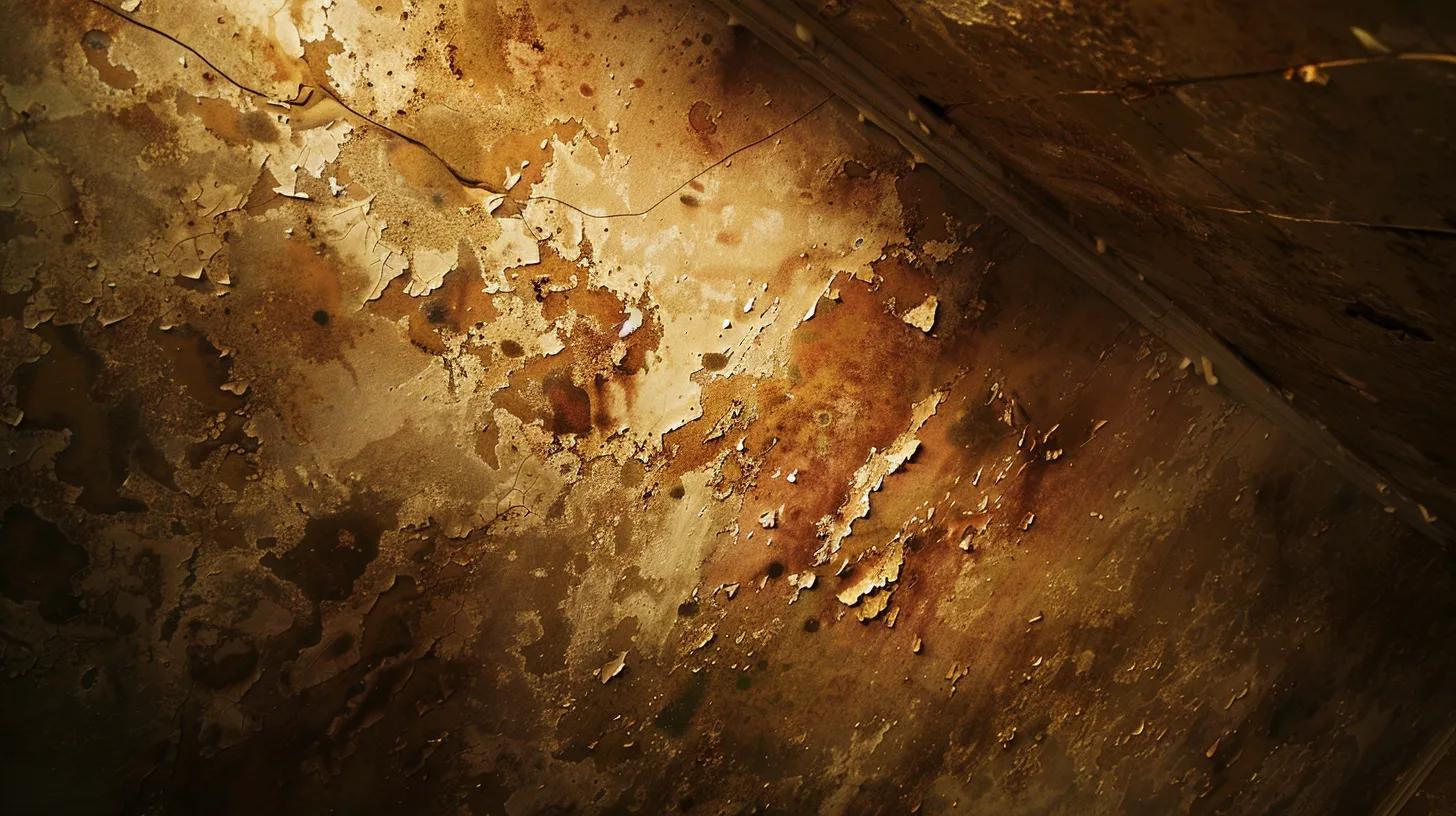
Examine Water Stains on Ceilings and Walls Early Signs of Leaks
Identifying discoloration patterns on your ceiling and walls is essential when assessing the condition of your roofing. Look for signs of mold or dampness near water stains, as these may indicate a damaged roof. Checking attic insulation for damp spots can reveal roof damage caused by storm damage. It’s also important to monitor any changes in water stains over time and to investigate areas close to chimneys or vents, where leaks are more likely to occur. Documenting the location of leaks enables you to prioritize repairs effectively.
Identify Discoloration Patterns on Interior Surfaces
When you notice discoloration patterns on your ceilings or walls, it’s a clear warning sign that moisture may be seeping through from your roof. Pay attention to any curling paint or stains that appear after extreme weather events, such as thunderstorms. These signs may indicate a damaged roof that requires immediate assessment to prevent further issues.
Monitoring moisture levels in your home can save you from costly repairs down the line. If you frequently experience heavy rain or strong winds, consider checking your roof’s condition and your insurance policy for coverage related to storm damage. Timely action in addressing discoloration caused by roof leaks not only protects your home but also enhances its overall safety and integrity.
Look for Signs of Mold or Dampness Alongside Water Stains
When inspecting for signs of water stains, be vigilant for mold or dampness that may accompany them. These indicators can signal underlying roof issues, especially after a winter storm when moisture becomes trapped. If you notice mold developing around rafters or ceilings, it might mean that your roof’s waterproofing has failed, allowing water infiltration that can damage your home’s structure and energy efficiency.
Damp areas near water stains, such as those on tile surfaces or walls, suggest prolonged exposure to moisture. This can create an environment conducive to mold growth, posing health risks to your household. By addressing these concerns promptly, you can not only protect your home’s integrity but also enhance your overall energy efficiency, ensuring that your living space remains comfortable and safe throughout the seasons.
Check Attic Insulation for Damp Spots Indicating Roof Damage
When checking your attic insulation, look for damp spots that could indicate roof damage. Moisture trapped in your insulation can lead to wood rot and attract pests, compromising your property’s structural integrity. If you find damp areas, it’s crucial to investigate further to determine if water is seeping through your roof or if issues exist near the eaves where leaks commonly occur.
Regular inspections of your attic can prevent costly repairs down the line. If you observe wet insulation, it is advisable to take action promptly. Contacting a professional to assess the situation can help identify the source of the leak and ensure your home remains protected from further damage:
Monitor Any Changes in Water Stains Over Time for Progression
Monitoring any changes in water stains over time is key to assessing your roof’s condition, especially after experiencing severe weather. If you notice that water stains are spreading or changing color, it may indicate a worsening leak that requires immediate attention. In regions with fluctuating climate conditions, keeping a close eye on these stains can help you identify potential roof damage before it escalates into a more significant problem.
Take the time to document the progression of any water stains you observe. By regularly checking for changes, you gain valuable insights into the health of your roof and the effectiveness of its waterproofing. If you notice that stains are increasing in size or number, this may suggest a need for professional evaluation and possible repairs to prevent further damage and maintain your home’s integrity.
Investigate Areas Close to Chimneys or Vents for Leaks
Inspecting areas close to chimneys and vents is essential in identifying potential leaks in your roof. These locations are often vulnerable due to the way roofing materials intersect with these structures. Regular checks for water stains or discoloration on ceilings and walls near chimneys or vents can help you catch issues before they escalate into costly repairs.
If you observe any signs of moisture around these areas, it’s crucial to take action promptly. Addressing leaks near chimneys and vents not only protects your interior spaces from water damage but also maintains the roof’s integrity. Since these features typically require specialized flashings for waterproofing, consider consulting a professional to evaluate and repair any damage effectively.
Document the Location of Leaks to Prioritize Repairs
To effectively manage roof leaks, documenting the specific locations of water stains on your ceilings and walls is crucial. As you observe these stains, take notes on their size, color, and exact placement to help identify patterns that may indicate ongoing issues. This documentation will serve as a valuable reference when you consult roofing professionals, ensuring they understand the extent of the problem and can provide targeted solutions.
Additionally, tracking the progression of these water stains over time will enable you to prioritize repairs based on severity. If you notice that stains are expanding or appearing in new areas, you’ll have a clear indication that immediate action is needed. By being proactive and precise in documenting these details, you position yourself to address potential roof problems efficiently, safeguarding your home from further damage.
Water stains speak of hidden troubles above. If you notice sagging or an uneven roof structure, act quickly; the integrity of your home depends on it.
Address Sagging or Uneven Roof Structure Urgently

It’s essential to address any sagging or uneven structure of your roof promptly. Start by inspecting the roofline for noticeable dips or bulging, then evaluate the integrity of the roof decking from underneath. Look for cracks in the ceiling drywall that supports the roof and consider how snow accumulation may distort its shape. Also, assess any signs of water pooling on the roof surface. If you observe significant sagging, seeking professional help is crucial to prevent further damage.
Inspect the Roofline for Any Noticeable Dips or Bulging
Inspecting your roofline for noticeable dips or bulging is a critical step in identifying potential sagging issues. If you see any irregularities in the roof structure, such as an uneven surface, it may indicate underlying problems that could affect the integrity of your home. Regular checks can help you catch these issues early, allowing for timely repairs to prevent further damage.
Pay attention to the overall shape of your roof as you conduct your inspection. Any significant sagging could suggest water pooling or structural stress, which might lead to leaks or further damage down the line. If you observe these concerning signs, it’s advisable to consult a roofing professional who can assess the situation and provide necessary solutions to ensure your roof remains safe and secure.
Evaluate the Integrity of the Roof Decking From Below
To evaluate the integrity of the roof decking from below, check for any noticeable cracks or sagging in the ceiling drywall. These signs might indicate that the roof structure is compromised and could lead to more severe issues if not addressed promptly. Ensuring the decking is sound is crucial, as it supports the entire roofing system and prevents structural failures.
Inspect areas where the roof meets the walls of your home for any discoloration or drooping. This could suggest trapped moisture or increased weight from accumulated snow or debris. Regular assessments of the roof decking will help you identify potential problems early, allowing you to contact a professional for necessary repairs to protect your home from further damage:
Look for Cracks or Splits in Ceiling Drywall Supporting the Roof
Inspecting the ceiling drywall for cracks or splits is crucial when evaluating your roof’s overall condition. These cracks can suggest that the roof structure is under strain, potentially due to water damage or accumulated weight from snow and debris. Recognizing these warning signs early helps you determine whether professional intervention is necessary to prevent more severe structural issues.
Pay attention to any visible damage in the ceiling as you assess your home. Cracks or splits not only indicate potential problems with the roof but can also lead to safety hazards within your living space. If you spot these signs, it’s essential to consult a roofing expert promptly to assess the situation and provide effective solutions to safeguard your home’s integrity.
Determine if Snow Accumulation Is Distorting the Roof Shape
To determine if snow accumulation is distorting your roof shape, examine the roof’s slope for any noticeable dips or uneven sections. Heavy snowfall can lead to excessive weight on your roof that may cause structural stress, potentially resulting in leaks or other severe issues. Regularly inspecting your roof after significant snowfall is vital for early detection of these problems.
If you notice that snow is pooling or creating noticeable bulges, it’s essential to act quickly. Clearing off snow can alleviate some of the weight and reduce the risk of damage. Additionally, if such distortions persist, consulting a professional can help ensure that your roof remains in good condition and that your home is protected from further complications.
Assess Any Signs of Water Pooling on the Roof Surface
When assessing your roof for signs of water pooling, look closely at low spots where water tends to accumulate after rainfall. This standing water can indicate underlying issues with your roof’s structure that may require urgent attention. Not only can water pooling cause leaks over time, but it can also lead to further structural damage, compromising the integrity of your home.
If you notice water pooling on your roof, it’s crucial to act quickly to prevent more significant problems from developing. Regular inspections should include checking for weakened areas that could lead to sagging or other structural concerns. Consulting a professional can provide you with an accurate assessment and the necessary solutions to address any water pooling issues effectively.
Seek Professional Help if Significant Sagging Is Observed
If you notice significant sagging in your roof, it is imperative to seek professional help immediately. Such sagging often indicates underlying structural issues, which can compromise the integrity of your entire home. A qualified roofing contractor can evaluate your situation, identify the cause of the sagging, and provide appropriate solutions to ensure your roof remains safe and secure.
An uneven roof not only looks bad but could lead to bigger problems. As you address these issues, don’t ignore the creeping moss and algae that threaten your roof’s life.
Investigate Excessive Algae or Moss Growth Affecting Roof Longevity

Check shaded areas of your roof where moisture can accumulate quickly, as these spots are prime for algae and moss growth. Look for green patches that may indicate potential damage, and assess how debris covering the roof surface affects its longevity. Examine weather conditions that promote this growth and explore eco-friendly cleaning options. Regularly monitor for recurrence of green growth to maintain your roof’s health.
Check Shaded Areas Where Moisture Accumulates Quickly
When examining your roof, pay special attention to shaded areas where moisture tends to accumulate. These spots create ideal conditions for algae and moss growth, which can lead to more significant roofing issues over time. Regular inspections of these areas will help you catch any signs of unwanted growth early, aiding in the preservation of your roof’s longevity.
If you find algae or moss, acting promptly is essential. Removing these growths helps maintain your roof’s integrity and prevents further deterioration that could require costly repairs. Celebrating a clear and healthy roofing surface not only enhances your home’s appearance but also protects your investment in the long run.
Look for Green Patches or Moss Causing Potential Damage
When examining your roof, it’s essential to pay attention to any green patches or moss growth. These areas often indicate moisture retention, which can lead to serious damage over time. If you notice any green spots, take immediate action to address the issue, as prolonged exposure can compromise the roofing materials and lead to leaks.
Cleaning these growths promptly will help protect your roof’s structure and prolong its lifespan. Consider using eco-friendly cleaning solutions designed for removing algae or moss to prevent potential damage. Regular inspections and maintenance not only keep your roof looking good but also help you avoid costly repairs down the road:
- Pay attention to shaded areas of the roof where moisture can accumulate.
- Look for signs of algae or moss, which may indicate underlying issues.
- Use eco-friendly cleaning options to safely remove growth.
- Regular maintenance helps prevent damage and extends roof longevity.
Assess the Impact of Debris Covering the Roof Surface
Debris accumulation on your roof can create an environment conducive to algae and moss growth. Leaves, twigs, and other organic matter can trap moisture, providing the perfect breeding ground for these unwanted plants. If you notice excessive debris, it is essential to clear it away regularly to maintain the health of your roof and prevent long-term damage.
Regular inspection and maintenance are necessary to assess the impact of debris on your roof’s surface. Taking the time to remove fallen branches and leaves not only helps avoid algae and moss growth but also allows for proper water drainage. This simple act can significantly extend the lifespan of your roof and help maintain its aesthetic appeal:
- Inspect for debris buildup regularly.
- Remove leaves and organic matter promptly.
- Ensure proper drainage to prevent moisture retention.
Consider Weather Conditions Promoting Algae and Moss Growth
Understanding the weather conditions that promote algae and moss growth on your roof is vital for maintaining its longevity. Areas that experience high humidity or frequent rainfall create an ideal environment for these organisms to thrive. Additionally, roofs that are shaded by trees or nearby structures often retain moisture, increasing the likelihood of algae and moss accumulation that can compromise your roofing materials over time.
Monitoring your local climate and addressing any environmental factors can help you take proactive steps in roof maintenance. For instance, if you notice dark patches or green growth on your roof, consider the surrounding trees and their relationship to sunlight exposure. Regular trimming of overhanging branches can enhance airflow and reduce moisture retention, ultimately helping to protect your roof from potential degradation:
Explore Eco-Friendly Cleaning Options for Roof Surfaces
When tackling algae and moss growth on your roof, consider using eco-friendly cleaning solutions that effectively remove these unwanted organisms without harming the environment. Products that contain natural ingredients, like vinegar or baking soda, can be particularly effective in breaking down algae and moss. Not only do these alternatives provide a safe cleaning option, but they also help maintain the health of your roof and surrounding vegetation.
Regularly applying these eco-friendly cleaning solutions can prevent further growth and enhance your roof’s longevity. As you incorporate routine maintenance, be sure to follow the manufacturer’s instructions and apply the treatments during dry weather for optimal results. Ensuring your roof remains clean not only improves its appearance but also protects your investment by minimizing the risk of damage caused by algae and moss accumulation:
- Identify shaded areas that promote algae and moss growth.
- Utilize natural cleaning products like vinegar or baking soda.
- Schedule regular maintenance to prevent recurrence.
- Monitor weather conditions affecting moisture retention.
Regularly Monitor for Recurrence of Green Growth After Cleaning
After cleaning your roof, it’s vital to keep an eye on the affected areas for any signs of recurring algae or moss growth. Regular monitoring allows you to address these issues promptly, preventing further deterioration of your roofing materials. For example, if you notice green patches returning within a few weeks, it may indicate lingering moisture or insufficient sunlight that could affect your roof’s longevity.
Taking swift action upon identifying the recurrence of algae or moss is essential to maintaining your roof’s health. If you see these unwanted growths reappearing, consider an additional cleaning or exploring preventative treatments that create a less hospitable environment for their growth. By staying vigilant and proactive, you can enhance your roof’s durability and protect your investment against potential damage.
Excessive algae or moss can silently chip away at your roof’s life. As you tackle this problem, keep an eye on your energy bills; they may reveal deeper issues affecting your home’s efficiency.
Observe High Energy Bills Indicating Roofing Issues Influencing Efficiency
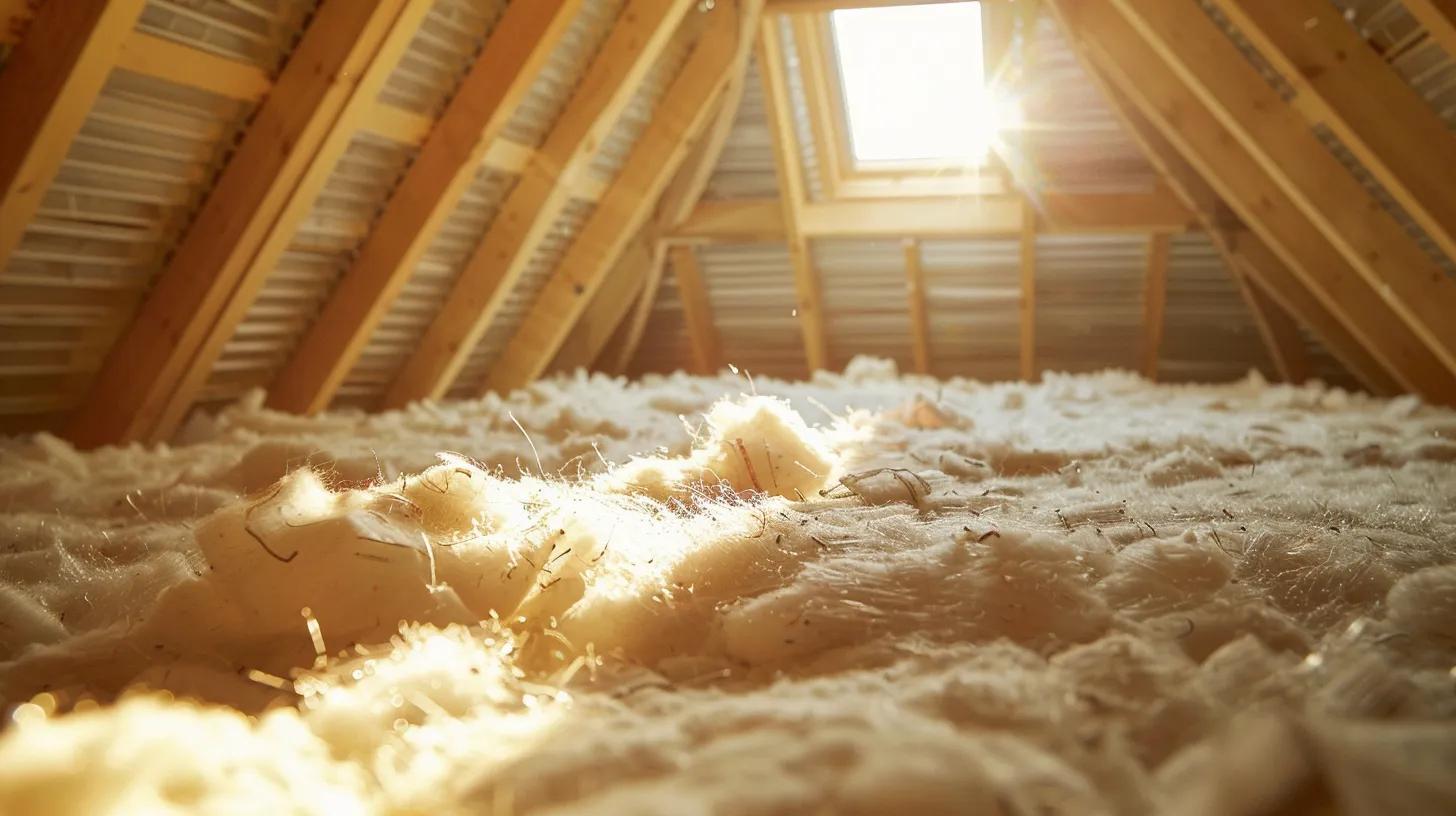
Monitoring your energy bills is essential to identify potential roofing issues. Start by comparing your monthly energy usage before and after roof installation to spot discrepancies. Investigate attic ventilation to ensure it functions correctly, and check for drafts or uneven temperatures in living spaces. Assess insulation levels, and evaluate whether your roof materials are energy-efficient. Engaging a professional can help pinpoint any inefficiencies affecting your home’s overall efficiency.
Compare Monthly Energy Usage Before and After Roof Installation
Monitoring your monthly energy bills before and after your roof installation is a practical way to identify potential roofing issues that could impact your home’s efficiency. If you notice a significant increase in your energy costs, it may indicate that your roof isn’t performing as it should. Factors like poor insulation, ventilation problems, or the quality of roofing materials can all contribute to energy loss.
By keeping track of your energy usage, you can pinpoint discrepancies that may warrant further investigation. If you suspect that your roof is the source of energy inefficiencies, consider consulting a professional to assess insulation levels, ventilation effectiveness, and overall roof integrity. Addressing these issues promptly can not only reduce your energy bills but also enhance your home’s comfort and safety:
Investigate if Attic Ventilation Is Functioning Correctly
Investigating whether your attic ventilation is functioning correctly is crucial for maintaining your home’s energy efficiency. Proper ventilation helps regulate temperature and humidity levels in your attic, which can directly impact your roof’s lifespan. If you notice unusual spikes in your energy bills, it may be a sign that your attic ventilation is inadequate, causing your HVAC system to work harder than necessary.
Check for signs of poor ventilation, such as significant heat buildup in the attic or visible condensation on rafters and insulation. These issues could indicate that air is not circulating properly, leading to increased energy usage and potential roof damage. Taking action to improve attic ventilation can not only enhance your home’s comfort but also protect your roofing investment over time:
- Regularly check for heat buildup in the attic.
- Look for condensation on rafters and insulation.
- Ensure vents are not blocked by insulation or debris.
- Consider using soffit and ridge vents for optimal airflow.
Look for Drafts or Uneven Temperatures in Living Spaces
Experiencing drafts or uneven temperatures in your home often signals underlying roof issues. If certain rooms feel significantly warmer or cooler than others, it could indicate that your roofing material or insulation isn’t functioning effectively. This discrepancy can lead to increased energy consumption as your heating or cooling systems work harder to maintain comfort, unnecessarily raising your energy bills.
To address these concerns, check for visible gaps around windows, doors, and any roof penetrations where conditioned air might escape. You may also want to examine your attic insulation to ensure it’s adequate and properly installed. Taking these steps not only enhances your home’s energy efficiency but also may help extend your roof’s lifespan by reducing the strain on your HVAC system.
Assess Insulation Levels in the Attic Area for Deficiencies
Assessing insulation levels in your attic is key to ensuring your roof’s efficiency and minimizing high energy bills. If your insulation is insufficient or improperly installed, it can lead to significant heat loss during winter or excessive heat gain in summer, forcing your HVAC system to work harder. This not only affects your comfort but also increases your energy costs over time, highlighting the need for an inspection.
During your inspection, look for thin or uneven layers of insulation. If you can see your attic floor joists, it may indicate inadequate insulation. Make sure to check for any compressed insulation, as this can create gaps and reduce its effectiveness. Improving insulation will enhance your home’s energy efficiency and may even prolong the lifespan of your roof by reducing the strain on roofing materials while keeping your living spaces comfortable:
- High energy bills may suggest insulation deficiencies.
- Inspect the thickness and uniformity of attic insulation.
- Addressing insulation issues improves comfort and lowers costs.
Evaluate if Roof Materials Are Energy-Efficient
Evaluating the energy efficiency of your roof materials is crucial for managing your home’s overall energy consumption. If you notice rising energy bills, it may indicate that your roofing materials are not effectively insulating your home. Materials like reflective shingles or energy-efficient tiles can help regulate indoor temperatures, reducing the strain on your HVAC system and leading to lower energy costs.
Consider the long-term impact of your roofing choices on energy efficiency. Upgrading to materials designed for energy conservation can significantly enhance your home’s comfort while saving you money. When looking at potential replacements or repairs, consult with a professional to explore energy-efficient options that suit your needs and budget:
- Assess the insulation properties of your current roofing materials.
- Research energy-efficient alternatives that fit your home style.
- Consult professionals for expert guidance on roofing upgrades.
Engage a Professional to Inspect Potential Inefficiencies
If you notice a sharp increase in your energy bills, this could signal underlying roofing inefficiencies that need attention. Engaging a professional to inspect your roof is key to identifying any issues related to insulation, ventilation, or damaged materials that may be causing excess energy consumption. A qualified contractor can conduct a thorough assessment of your roofing system, pinpointing areas that require repairs or upgrades.
During the inspection, the professional will evaluate factors such as attic ventilation, insulation thickness, and the overall integrity of roofing materials. Their expertise ensures that any inefficiencies are addressed effectively, helping to lower your energy costs and enhance your home’s comfort. Taking this proactive step not only protects your roofing investment but also improves your home’s overall energy efficiency:
- Monitor energy bills for unusual increases.
- Engage a professional for a roof inspection.
- Evaluate insulation and ventilation systems.
- Address identified inefficiencies to save on energy costs.
As you examine your high energy bills, you might notice more than just rising costs. Look up and see the gutters, filled with debris, hinting at deeper maintenance issues waiting to be addressed.
Notice Debris Accumulation in Gutters Signaling Neglected Maintenance

Checking for debris accumulation in your gutters is essential for maintaining your roof’s health. Begin by identifying the presence of twigs and leaves that may obstruct water flow. Verify that water drains freely from your roof to the ground and look for any sagging gutters filled with debris. These blockages can lead to significant roof damage over time, emphasizing the need for regular gutter cleaning. Consider installing screens to minimize future debris accumulation and protect your roofing investment.
Identify the Presence of Twigs and Leaves in Gutters
Regularly inspecting your gutters for twigs and leaves is essential for maintaining the health of your roof. When debris accumulates, it prevents water from flowing freely, which can lead to water pooling on your roof and potential structural damage. By checking your gutters frequently, you can avoid costly repairs that arise from neglecting this vital maintenance task.
If you find leaves and twigs clogging your gutters, it’s important to take action quickly. Clear the debris to ensure proper drainage, and consider installing gutter guards to reduce future accumulation. This proactive approach can significantly extend the life of your roof and help safeguard your home from the damaging effects of overflowing gutters.
Check if Water Is Draining Freely From Roof to Ground
Regularly checking if water drains freely from your roof to the ground is crucial for maintaining your roof’s integrity. If you notice water pooling on your roof, it could indicate blocked gutters or downspouts, leading to significant damage over time. Ensuring that your drainage system is clear can help prevent leaks and extend the life of your roofing materials.
If you find that water isn’t flowing as it should, take immediate action to address the issue. Cleaning out debris, such as leaves or twigs, can restore proper drainage. This simple maintenance task protects your roof and saves you from expensive repairs in the future, ensuring your home remains safe and secure.
Look for Sagging Gutters Filled With Debris Hindering Flow
As you inspect your gutters, look for any signs of sagging caused by debris accumulation. When gutters become filled with leaves, twigs, or other organic matter, they can hinder proper water flow. This blockage can lead to water pooling on your roof, increasing the risk of leaks and structural damage over time, making timely maintenance crucial for protecting your investment.
If you notice that your gutters are sagging and filled with debris, it’s essential to address the issue immediately. Clear out the clutter to restore proper drainage and consider installing gutter guards to minimize future buildup. Regular checks will ensure your roofing system remains effective, safeguarding your home from potential water damage and promoting its longevity:
Assess How Obstructed Gutters Contribute to Roof Damage
When your gutters become obstructed with twigs, leaves, and other debris, they can no longer effectively transport water away from your roof. This blockage creates conditions where water can pool on the roof, leading to leaks that compromise both the roofing material and the interior of your home. Over time, excessive water accumulation can result in significant structural damage, increasing repair costs and reducing your roof’s lifespan.
It’s essential to regularly check and maintain clean gutters to prevent these issues. If you notice water backing up or overflow from your gutters, take immediate action to clear the obstructions. Addressing gutter maintenance not only safeguards your roof from potential leaks but also ensures the overall health of your home, protecting your investment and enhancing your peace of mind.
Plan for Regular Gutter Cleaning to Prevent Future Issues
To maintain the integrity of your roof, planning for regular gutter cleaning is essential. Neglecting to clear debris can lead to clogs that obstruct water flow, causing it to pool on your roof. This situation can increase the risk of leaks and structural damage, which could result in costly repairs down the line.
Consider setting a schedule for gutter maintenance, ideally at least twice a year, to prevent debris buildup. This proactive approach not only safeguards your roofing materials but also enhances your home’s overall drainage system. Taking these steps helps ensure your roof remains in optimal condition and protects your investment in your property.
Consider Installing Screens to Reduce Debris Accumulation
Installing screens on your gutters is an effective way to reduce debris accumulation and ensure water drains properly from your roof. With screens in place, you can prevent leaves and twigs from clogging your gutters while allowing rainwater to flow freely. This simple upgrade not only saves you from frequent cleaning but also protects your roof from water pooling that can lead to structural damage.
By using gutter screens, you can maintain the integrity of your roofing system without the hassle of regular inspections and cleanings. Many homeowners find that this cost-effective solution minimizes maintenance efforts and extends the lifespan of their gutters and roof. As a proactive measure, consider consulting with a professional to determine the best type of screens for your specific needs and roofing conditions.
As you assess the debris in your gutters, consider what this means for your home’s health. The clarity in what needs to be done will guide you to critical decisions for protecting your investment.
Conclusion
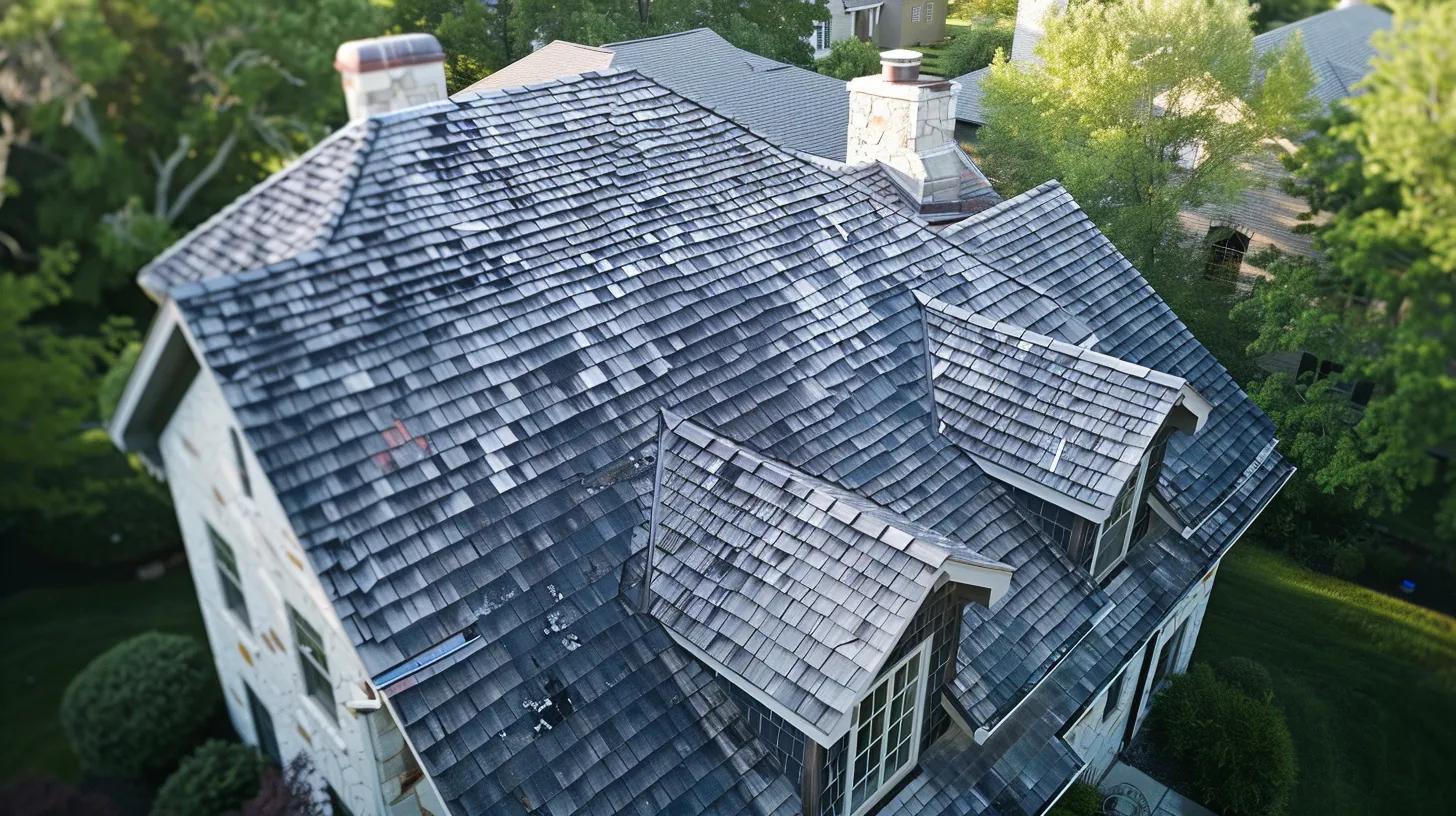
Recognizing the key warning signs that your roof may require attention is essential for home maintenance. By identifying issues such as missing shingles, water stains, or sagging structures early, you can prevent further damage and costly repairs. Regular inspections enhance your roof’s longevity and protect your investment.
Pay close attention to your roof’s surface and surrounding areas after extreme weather events. If you notice lifted or broken shingles, take immediate action to address these concerns. Proactive measures can safeguard your home from leaks and water damage, ensuring its overall integrity.
Examine your interior for signs of moisture or mold, particularly near chimneys and vents. These indicators may suggest that your roof’s waterproofing has failed, allowing water to penetrate. Taking these early signs seriously helps you maintain a safe and comfortable living environment.
Lastly, if you experience significant energy bill increases, it may point to roofing inefficiencies. Consider having a professional assess your roof, insulation, and ventilation systems. Prompt attention to these issues not only saves on energy costs but also preserves the performance and durability of your roofing system.
Frequently Asked Questions
What are the signs of missing or damaged shingles?
Signs of missing or damaged shingles include curling edges, discoloration, granules in gutters, and visible cracks. Pay attention to leaks inside your home, as these can indicate underlying roof problems requiring prompt attention from professionals.
How can I identify water stains on my ceiling?
To identify water stains on your ceiling, look for discolored patches, typically yellow or brown, which may indicate leaks. Feel for dampness and check for peeling paint or mold, signaling potential moisture issues needing immediate attention.
Why is a sagging roof a cause for concern?
A sagging roof signals structural integrity issues, leading to potential leaks and increased repair costs. Ignoring this problem could jeopardize your home’s safety, making prompt inspection by a qualified contractor essential to prevent further damage.
Is excessive algae growth harmful to my roof?
Excessive algae growth on your roof can cause significant damage by retaining moisture, leading to shingles deterioration and increased risk of leaks. Regular maintenance and cleaning ensure your roof remains in prime condition, preventing costly repairs.
How can high energy bills indicate roofing issues?
High energy bills may signal roofing problems, such as missing shingles or inadequate insulation. These issues allow conditioned air to escape, forcing your heating or cooling system to work harder, ultimately increasing your energy costs.
Conclusion
Monitoring key warning signs that indicate your roof may need attention is vital for maintaining your home’s integrity. Regularly check for missing or damaged shingles, water stains, and sagging structures to catch problems early and prevent costly repairs. Addressing these issues proactively enhances your roof’s longevity and protects your investment. Prioritizing your roof’s condition not only ensures safety and comfort but also contributes significantly to your home’s overall value.



